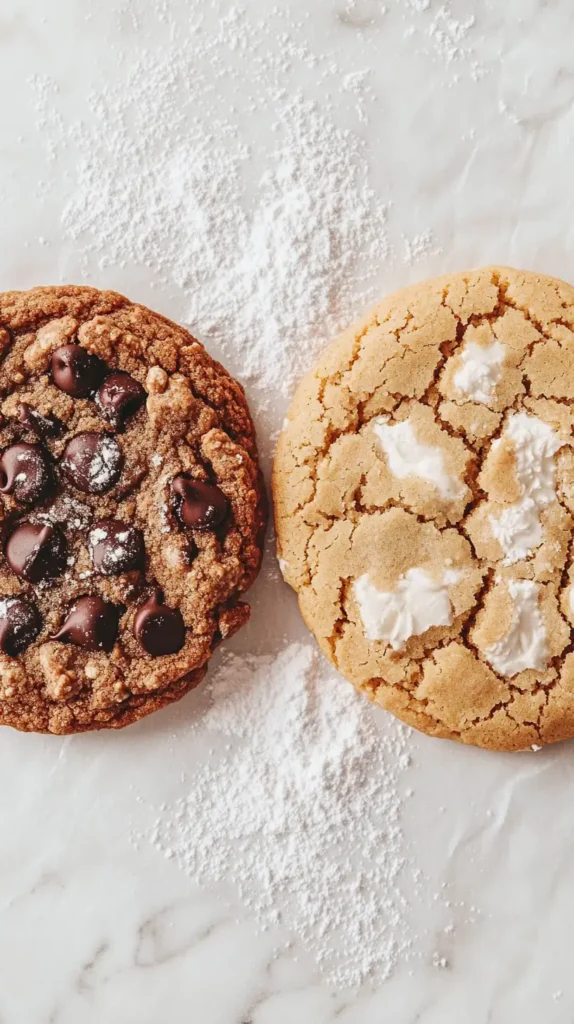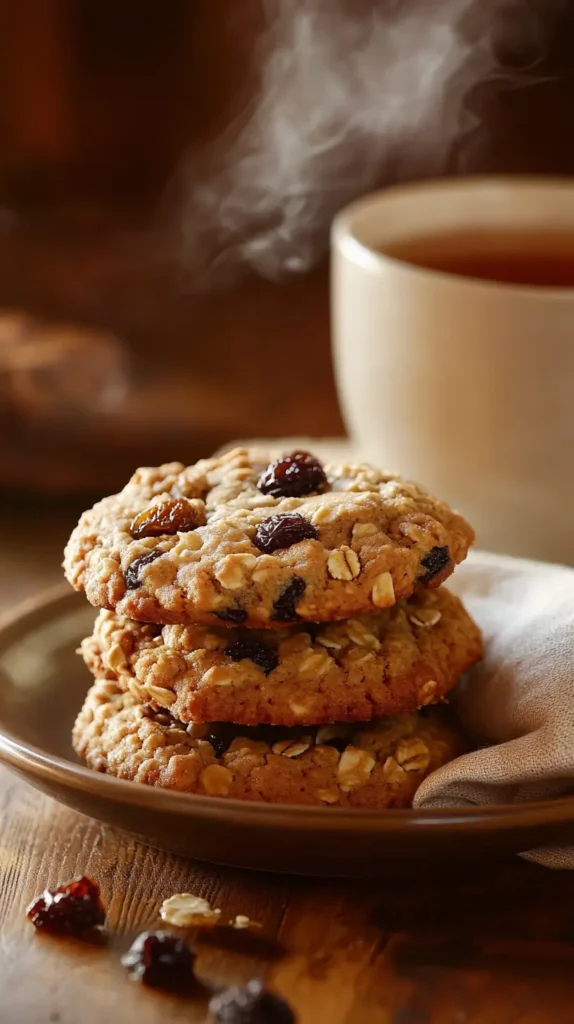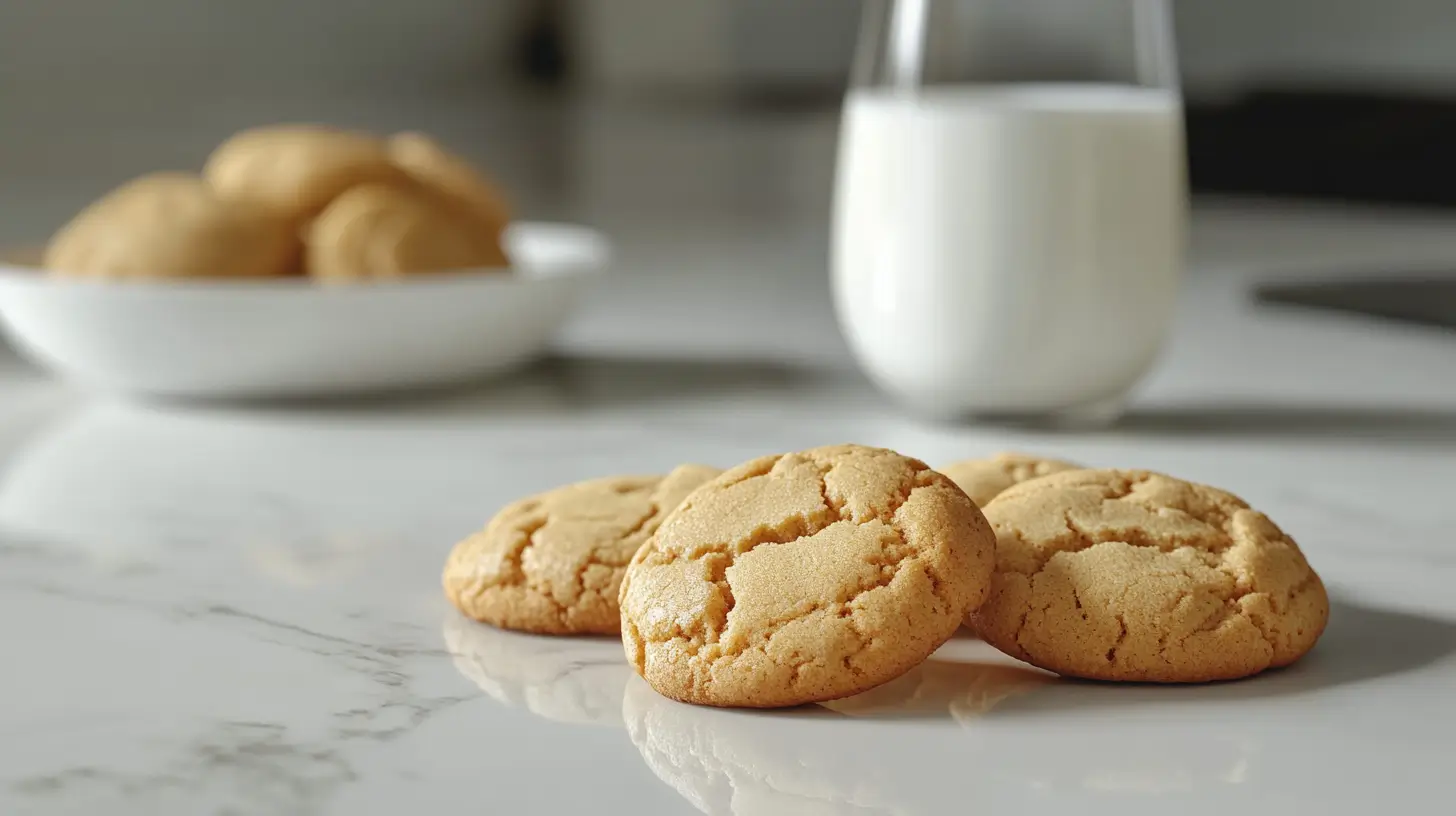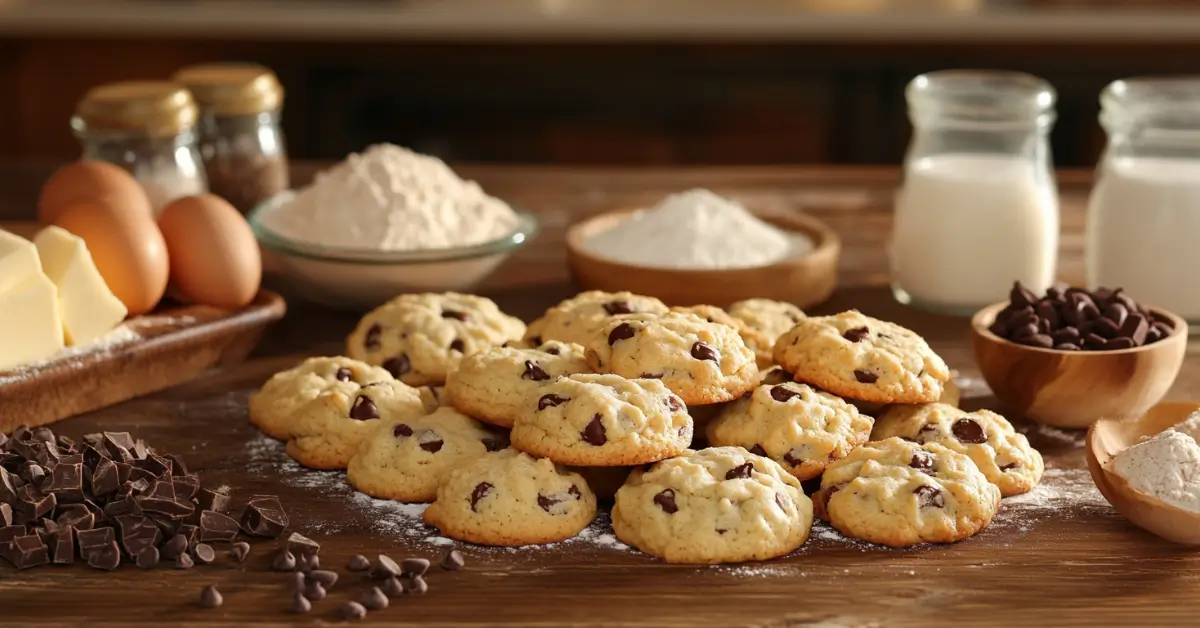Cookies are a universally beloved treat, but the debate over their perfect texture—chewy or crunchy—is endless. Understanding the science behind their texture can help bakers tailor cookies to their personal preferences. This article will dive deep into the factors that determine whether a cookie is chewy or crunchy.
The Science Behind Cookie Textures
How Ingredients Affect Texture
Every ingredient in a cookie recipe plays a specific role, influencing the final texture. For chewy cookies, ingredients that retain moisture are critical. Conversely, crunchy cookies benefit from ingredients that evaporate water during baking.
- Flour provides structure; a higher protein content can yield a firmer texture.
- Sugar impacts moisture retention. Brown sugar contributes to chewiness, while white sugar encourages crispness.
- Fats like butter or shortening control the spread of cookies, affecting their thinness and crispness.
Each element works in tandem, illustrating what makes cookies chewy vs. crunchy based on recipe composition.
The Role of Gluten in Cookies
Gluten forms when water interacts with proteins in flour, providing elasticity and structure to baked goods. For cookies, controlling gluten development is key to achieving the desired texture. Over-mixing dough increases gluten formation, resulting in denser, chewier cookies. On the other hand, minimizing mixing reduces gluten, creating lighter, crispier cookies.
Balancing gluten content and mixing time is essential when determining what makes cookies chewy vs. crunchy.
Key Ingredients and Their Impact
Sugar: Brown vs. White
Sugar isn’t just a sweetener—it’s a texture influencer. The type of sugar used has a significant effect on what makes cookies chewy vs. crunchy:
- Brown sugar, with its molasses content, retains moisture, resulting in soft, chewy cookies.
- White sugar promotes spreading and drying out, which creates a crispy texture.
A mix of these sugars can create cookies with both chewy centers and crispy edges.
Fats: Butter, Shortening, and Oil
The type of fat you choose impacts not only flavor but also what makes cookies chewy vs. crunchy. Each fat has unique properties:
- Butter melts quickly in the oven, leading to thin, crispy cookies.
- Shortening remains solid longer, promoting a thicker, chewier texture.
- Oil contributes to moistness but doesn’t offer the same structure as solid fats.
Selecting the right fat or combining fats can help you customize your cookies’ texture.
Eggs: Whole Eggs vs. Yolks
Eggs contribute to both structure and moisture, but how they’re used determines what makes cookies chewy vs. crunchy.
- Whole eggs provide balance, adding both moisture and protein for structure.
- Egg yolks are high in fat, enhancing chewiness.
- Egg whites add crispness when used alone due to their drying properties.
Adjusting egg content allows bakers to fine-tune cookie textures to their liking.
Baking Techniques That Make a Difference
Mixing Methods: Creaming vs. One-Bowl Techniques
The way ingredients are mixed significantly affects what makes cookies chewy vs. crunchy.
- The creaming method, which involves beating butter and sugar, incorporates air into the dough. This leads to cookies with a tender texture.
- One-bowl techniques minimize air incorporation, resulting in denser, chewier cookies.
Choosing the right mixing method ensures your cookies turn out exactly how you want them.
Dough Chilling: Why It Matters
Chilling dough is a crucial step for controlling moisture and texture. Cold dough spreads less during baking, leading to thicker, chewier cookies. Without chilling, cookies spread more, becoming thinner and crispier.
Understanding why chilling impacts what makes cookies chewy vs. crunchy can elevate your baking results.
Oven Temperature and Baking Times for Perfect Cookie Textures
Temperature and time are powerful tools in determining what makes cookies chewy vs. crunchy. Baking at lower temperatures for longer periods dries out cookies, resulting in crispness. Conversely, higher temperatures cook cookies quickly, retaining moisture for chewiness.
Careful monitoring ensures the perfect balance of textures in your cookies.
The Role of Moisture in Cookies
High-Moisture Ingredients for Chewy Cookies
Chewy cookies thrive on moisture-retaining ingredients. Key components include:
- Brown sugar, which traps water during baking.
- Butter, which contains more water than shortening.
- Egg yolks, adding richness and moisture.
Including these ingredients helps achieve the soft, chewy texture many bakers love.
Low-Moisture Techniques for Crunchy Cookies
For crispy cookies, reducing moisture is critical. Techniques that contribute to crispness include:
- Using white sugar instead of brown.
- Substituting shortening for butter to reduce spread.
- Baking longer to allow more water to evaporate.
These strategies reveal what makes cookies chewy vs. crunchy based on moisture levels.

How Flour Types Influence Texture
All-Purpose Flour vs. Cake Flour
The type of flour used directly impacts cookie texture. What makes cookies chewy vs. crunchy often comes down to protein content:
- All-purpose flour, with higher protein, results in firmer, chewier cookies.
- Cake flour, with lower protein, creates delicate, tender cookies with a crisp edge.
Experimenting with flour types allows bakers to refine their recipes.
Gluten-Free Options for Chewy or Crunchy Cookies
For gluten-free cookies, achieving the right texture requires thoughtful ingredient selection. Replacing wheat flour with almond flour or oat flour often results in softer cookies. Adding binders like xanthan gum can mimic gluten’s structure for better control over chewiness or crispness.
The Chemistry of Sugar in Baking
How Sugar Caramelizes and Impacts Texture
Sugar caramelization occurs when sugar is heated, creating crispy edges and golden color. This process significantly affects what makes cookies chewy vs. crunchy. Higher sugar content leads to more caramelization, which can create crisp, flavorful cookies.
The Hygroscopic Nature of Sugar in Cookie Textures
Sugar is hygroscopic, meaning it attracts water. This property is essential to understanding what makes cookies chewy vs. crunchy. Brown sugar retains more moisture than white sugar, making it ideal for chewy cookies. Using less hygroscopic sugars results in drier, crunchier textures.
The Importance of Leavening Agents
Baking Powder vs. Baking Soda
Leavening agents play a vital role in what makes cookies chewy vs. crunchy. Both baking powder and baking soda create carbon dioxide gas that makes cookies rise, but they work differently:
- Baking soda requires an acidic ingredient (e.g., brown sugar) to activate. It encourages spreading and a denser texture, ideal for chewy cookies.
- Baking powder contains both acid and base, producing a more uniform rise and lighter, crispier cookies.
Choosing the right leavening agent ensures you achieve your desired texture.
Balancing Leavening Agents for Chewy or Crunchy Cookies
The amount of leavening directly influences what makes cookies chewy vs. crunchy. Too much baking soda can cause excessive spreading, leading to thin, crispy cookies. On the other hand, too much baking powder can result in cakey cookies.
For perfectly chewy cookies, use minimal leavening to maintain density. For crisp cookies, increase leavening to encourage spreading and drying during baking.
Common Mistakes and How to Fix Them
Overmixing the Dough
Overmixing is a common error that can alter what makes cookies chewy vs. crunchy. Excess mixing develops too much gluten, resulting in tough, chewy cookies instead of light, crispy ones. To avoid this:
- Mix until ingredients are just combined.
- Fold in additions like chocolate chips gently to minimize gluten development.
Misjudging Baking Times
Baking time directly impacts what makes cookies chewy vs. crunchy. Removing cookies too early leaves them soft and undercooked, while baking too long creates a hard, overly crispy texture.
- For chewy cookies, pull them out when edges are set but centers are slightly underbaked.
- For crunchy cookies, bake until the entire surface is golden brown.
Keep a close eye on your cookies during the final minutes.
Skipping Dough Chilling: How It Affects Cookie Texture
Skipping dough chilling can ruin your texture. Chilling solidifies fats, reducing spread during baking and allowing flavors to develop. For what makes cookies chewy vs. crunchy:
- Chill dough for at least 30 minutes for thicker, chewier cookies.
- If crispness is desired, bake immediately for thinner, spread-out cookies.
Chewy Cookie Recipes
Classic Chocolate Chip Cookies
This recipe emphasizes what makes cookies chewy vs. crunchy by balancing ingredients for a soft, chewy texture:
- Use brown sugar for moisture.
- Incorporate an extra egg yolk for richness.
- Chill dough before baking to reduce spread.
Follow these steps, and you’ll have the perfect chewy chocolate chip cookies.
Soft Oatmeal Raisin Cookies for Chewy Perfection
Oatmeal raisin cookies highlight what makes cookies chewy vs. crunchy with their hearty texture and sweet chewiness. To achieve the best results:
- Use a mix of brown sugar and honey for moisture.
- Add a generous amount of oats for a dense, chewy bite.
- Bake until edges are just set.
These cookies are ideal for those who prefer soft, flavorful treats.

Crunchy Cookie Recipes
Crisp Gingersnaps
Crisp gingersnaps showcase what makes cookies chewy vs. crunchy with their crunchy snap and warm spices. Tips for crisp gingersnaps:
- Use white sugar to encourage crispness.
- Add molasses for depth without too much moisture.
- Bake longer at a lower temperature to dry out the cookies.
Gingersnaps are a classic example of a perfectly crunchy cookie.
Classic Butter Cookies for Perfect Crunchiness
Butter cookies rely on their high-fat content for their delicate crunch. To highlight what makes cookies chewy vs. crunchy:
- Cream butter and sugar for a light, airy dough.
- Roll dough thinly for even baking.
- Bake until edges are golden for a crisp texture.
These cookies melt in your mouth with a satisfying crunch.
Customizing Recipes for Your Preferences
Adjusting Ingredients for Desired Texture
Tweaking ingredients is the key to understanding what makes cookies chewy vs. crunchy. Here’s how to adjust:
- Increase moisture (e.g., brown sugar, egg yolks) for chewiness.
- Decrease moisture (e.g., white sugar, egg whites) for crispness.
- Use different fats to control spread and texture.
Experimentation is crucial for finding the perfect balance.
Experimenting with Baking Techniques for Cookie Perfection
Techniques also play a crucial role in what makes cookies chewy vs. crunchy. Some ideas to try:
- Adjust oven temperature: Lower heat retains moisture for chewiness, while higher heat crisps the edges.
- Change mixing methods: More mixing develops gluten for chewiness; less mixing minimizes it for crispness.
- Test different baking times: Underbake for softer cookies, overbake slightly for crunchier results.
Every small adjustment brings you closer to your perfect cookie.
FAQs
What is the secret to chewy cookies?
The secret to chewy cookies lies in their moisture content and how it’s retained during baking. Key strategies include:
- Use brown sugar: Its molasses content holds moisture, giving cookies a softer texture.
- Incorporate an extra egg yolk: Egg yolks are rich in fat and help create a tender, chewy crumb.
- Add more butter: The water content in butter adds moisture to the dough.
- Chill the dough: Chilled dough spreads less, resulting in thicker, chewier cookies.
Balancing these elements ensures your cookies stay soft and chewy.
What makes a cookie chewy instead of crunchy?
A cookie’s chewiness is determined by its moisture retention and ingredient composition. Here are the main factors:
- Sugar choice: Brown sugar and other hygroscopic (moisture-attracting) sugars make cookies chewier.
- Fat content: Butter contributes moisture, while shortening creates a firmer, crispier texture.
- Flour-to-liquid ratio: More liquid ingredients, such as eggs or butter, result in a moister, chewier cookie.
- Baking time and temperature: Shorter baking times at higher temperatures preserve moisture, while longer baking times dry out cookies for crispness.
The combination of these factors dictates whether a cookie is chewy or crunchy.
How do you keep cookies crisp and chewy?
It’s possible to create cookies that are both crisp and chewy by carefully balancing ingredients and techniques:
- Use a mix of sugars: Brown sugar keeps the center chewy, while white sugar crisps up the edges.
- Flatten the dough slightly before baking: This encourages thinner, crispier edges while retaining a soft center.
- Bake at moderate heat: A temperature of around 350°F (175°C) ensures cookies cook evenly, avoiding over-drying or undercooking.
- Store properly: Store cookies in an airtight container to keep the centers chewy. Add a slice of bread to the container to prevent excessive drying.
These adjustments ensure your cookies have the perfect combination of textures.
What is the secret to a crunchy cookie?
The secret to crunchy cookies is reducing moisture and encouraging spreading during baking. Key tips include:
- Use white sugar: It encourages spreading and drying, resulting in a crisp texture.
- Choose shortening or oil: These fats help cookies hold their shape and become crisp during baking.
- Increase baking time: Bake cookies slightly longer at a lower temperature to dry them out completely.
- Thin the dough: Rolling or flattening the dough before baking creates thinner cookies, which crisp more easily.
These techniques ensure a satisfying crunch in every bite.
Conclusion: Chewy vs. Crunchy – It’s All About Preference
Ultimately, what makes cookies chewy vs. crunchy boils down to personal preference. By understanding the role of ingredients, leavening agents, and baking techniques, you can master the art of crafting cookies tailored to your taste. Whether you love soft, chewy bites or crisp, snappy treats, the perfect cookie is within reach.





